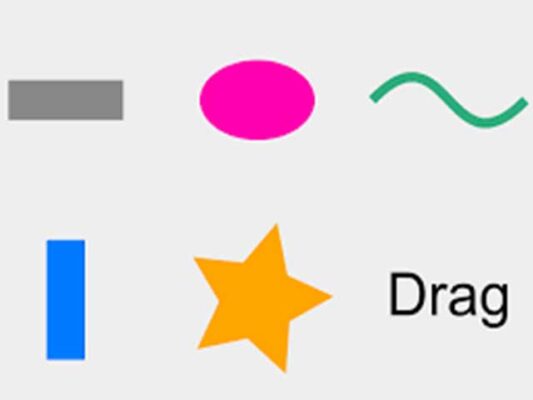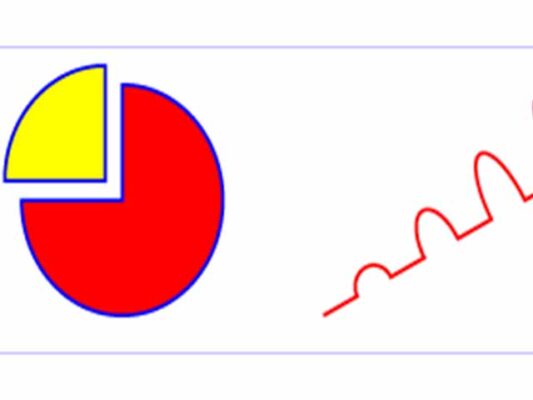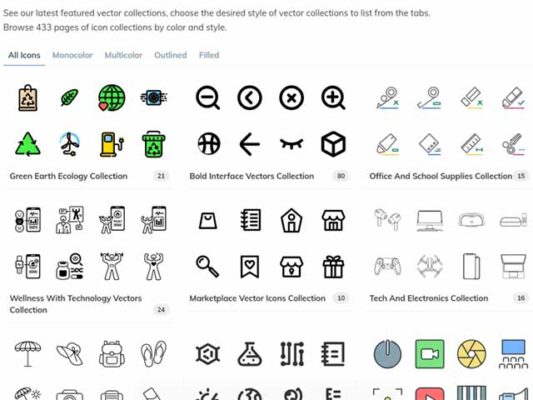In the expansive landscape of digital design, Scalable Vector Graphics, commonly known as SVG, have emerged as a powerful and versatile tool. If you find yourself pondering the question, “What are SVG graphics?” this comprehensive exploration aims to unravel the essence of SVG, delving into their definition, attributes, creation process, and the myriad ways they enhance the dynamic world of digital imagery.
Contents
Defining SVG Graphics
Scalable Vector Graphics Unveiled
SVG, an acronym for Scalable Vector Graphics, is an XML-based vector image format designed to describe two-dimensional vector graphics. Unlike raster images that are pixel-based, SVG graphics utilize mathematical equations to define shapes, paths, and colors, offering a resolution-independent solution that maintains clarity and precision at any size.
XML Markup Language
At its core, SVG graphics employ XML (eXtensible Markup Language) to define the structure and content of the image. This human-readable markup language allows designers and developers to create and manipulate SVG graphics with ease, providing a flexible platform for visual expression.
The Anatomy of SVG Graphics
Elements and Attributes
SVG graphics consist of various elements and attributes that define the visual components of the image. Elements include shapes such as circles, rectangles, and paths, while attributes dictate characteristics like color, stroke, and opacity. This modular structure empowers designers to create intricate visuals with precision and control.

Shapes and Paths
SVG supports a diverse range of shapes, including circles, ellipses, rectangles, and polygons. The path element allows for the creation of custom shapes through the specification of coordinates and control points, offering unparalleled flexibility in design.

Creating SVG Graphics
Manual Creation
Designers can create SVG graphics manually using text editors or specialized SVG editors. This hands-on approach allows for the direct manipulation of SVG code, providing complete control over every element and attribute.
Graphic Design Software
Popular graphic design software, such as Adobe Illustrator or Inkscape, supports the creation and export of SVG graphics. Designers can leverage familiar interfaces to craft intricate visuals before exporting them as SVG files for web or application integration.
Integration into Web Development
Inline SVG in HTML
One of the primary applications of SVG graphics is their integration into web development. SVG graphics can be embedded directly within HTML documents using inline SVG. This method allows for seamless integration, enabling designers to incorporate scalable and interactive visuals into web content.
CSS Styling for SVG
Cascading Style Sheets (CSS) play a crucial role in styling SVG graphics. Designers can apply CSS rules to modify the appearance of SVG elements, providing a dynamic and responsive visual experience on web pages.
Interactivity and Animation
Scripting with JavaScript
SVG graphics support interactivity and animation through the integration of JavaScript. Designers and developers can use JavaScript to add responsive behaviors, dynamic changes, and intricate animations to SVG elements, enhancing the overall user experience.

Advantages of SVG Graphics
Resolution Independence
One of the standout advantages of SVG graphics is their resolution independence. Regardless of the display size or device, SVG graphics maintain sharpness and clarity, making them ideal for responsive web design.
Accessibility
SVG graphics are inherently accessible, as their XML structure allows for the inclusion of text elements and descriptions. This makes SVG an excellent choice for creating graphics that are compatible with screen readers and contribute to an inclusive web environment.
Use Cases and Applications
Icons and Logos
SVG graphics are widely employed for the creation of icons and logos. Their scalability and precision make them a preferred format for these visual elements, ensuring consistency across various platforms and devices.

Data Visualization
In the realm of data visualization, SVG graphics shine. Their ability to represent complex shapes, charts, and diagrams with clarity and flexibility makes them a valuable tool for conveying information in a visually compelling manner.

Future Trends and Considerations
Responsive Design Evolution
As responsive design continues to evolve, SVG graphics are poised to play a pivotal role. Their adaptability to different screen sizes and resolutions aligns seamlessly with the principles of responsive and fluid design.
Performance Optimization
While SVG graphics offer numerous advantages, considerations for performance optimization are crucial. Minimizing unnecessary code and optimizing SVG files contribute to faster page load times and a more efficient user experience.
SVG graphics represent a dynamic and powerful tool in the visual landscape of digital design. Their vector-based nature, resolution independence, and adaptability make them a go-to choice for designers and developers seeking precision, clarity, and flexibility. As technology advances and design trends evolve, SVG graphics will likely continue to be a cornerstone in the creation of visually stunning and accessible digital content, shaping the visual language of the digital era.
I hope this article on “What are SVG graphics?” has been informative and helpful in your journey to mastering the art of creating SVG files. If you found this content beneficial, consider exploring additional articles on related topics to deepen your understanding and enhance your skills. Feel free to check out the following articles for further insights:
A Comprehensive Guide on How to Upload SVG Files into the Cricut App from Your iPhone
A Comprehensive Guide on How to Create and Sell SVG Files on Etsy

